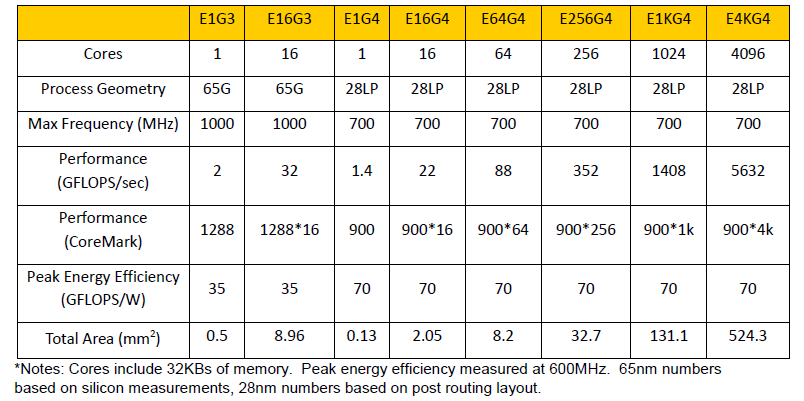Adapteva Announces 700 MHz, 4096-Core Processor
There is a new startup that is developing a multicore architecture IP that promises up to 4,096 RISC processing cores on a single die.
The company claims that the chip will be achieving a performance efficiency of 70 GFlops per watt. The flagship processor would produce more than five times the floating point performance of the ASCI RED, a supercomputer that used 9,680 Pentium Pro processors back in 1997, which was good for a total performance of 1 TFlops.
Adapteva's Epiphany chip is planned to be available in versions with just one core with a die size of 0.1 mm2 (28 nm) and 0.5 mm2 (65 nm), 16 cores (2.05 mm2 and 8.96 mm2 in 65 nm and 28 nm, respectively), 64 cores (8.2 mm2 in 28 nm), 256 cores (32.7 mm2 in 28 nm), 1,024 cores (131.1 mm2 in 28 nm) and 4,096 cores (524.3 mm2 in 28 nm). However, the company said that it has only built up to 16-core processors in actual silicon so far.
The single-core chip is said to deliver 2 GFlops at 1 GHz, while the 16-core processors provides up to 32 GFlops at 1 GHz. The 4,096-core version (700 MHz) is estimated to deliver 5.6 TFlops of sustained floating point performance while consuming only 80 watts.
There was no information about the availability of the Epiphany processors.
Get Tom's Hardware's best news and in-depth reviews, straight to your inbox.

Douglas Perry was a freelance writer for Tom's Hardware covering semiconductors, storage technology, quantum computing, and processor power delivery. He has authored several books and is currently an editor for The Oregonian/OregonLive.
